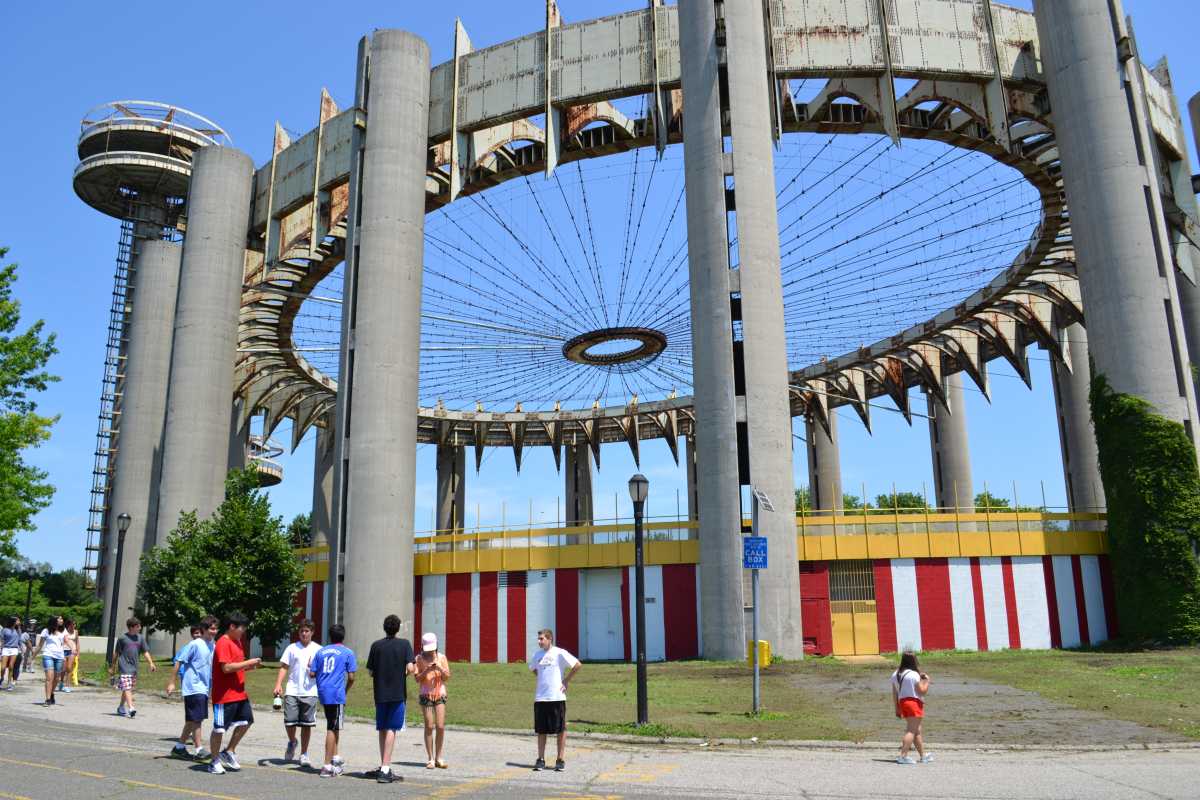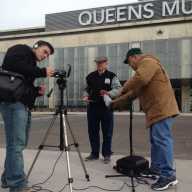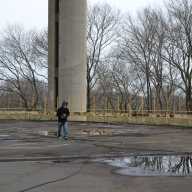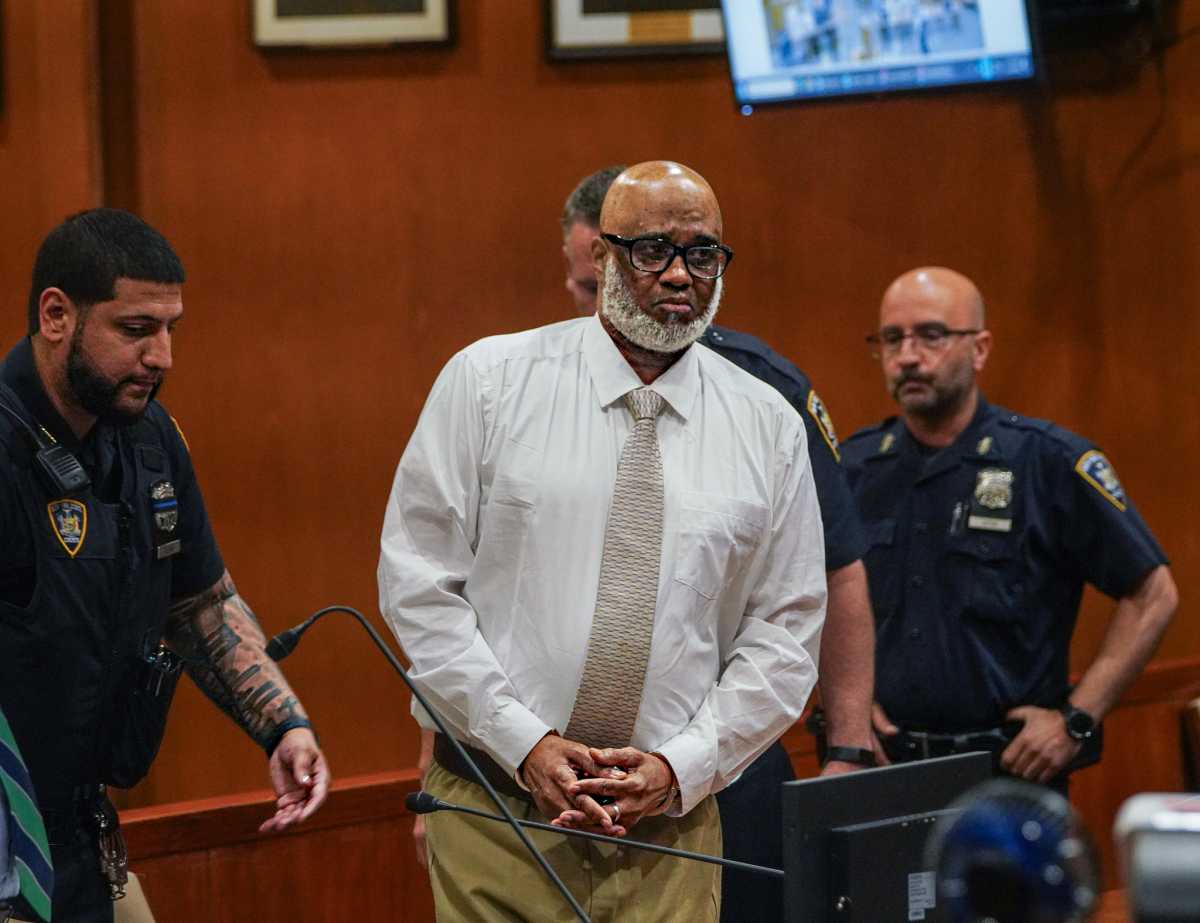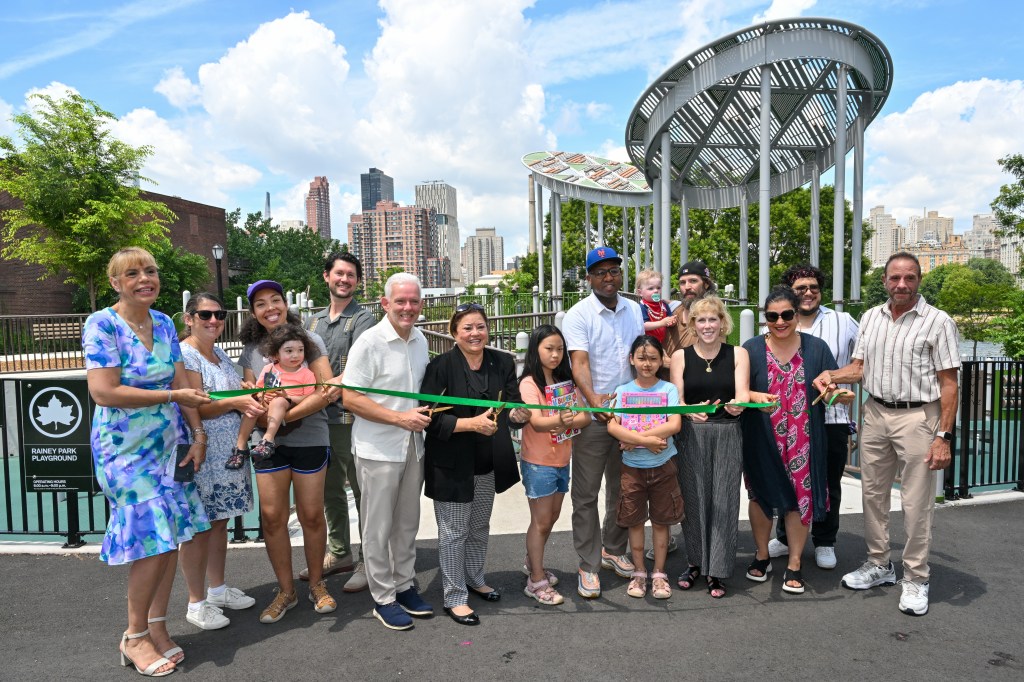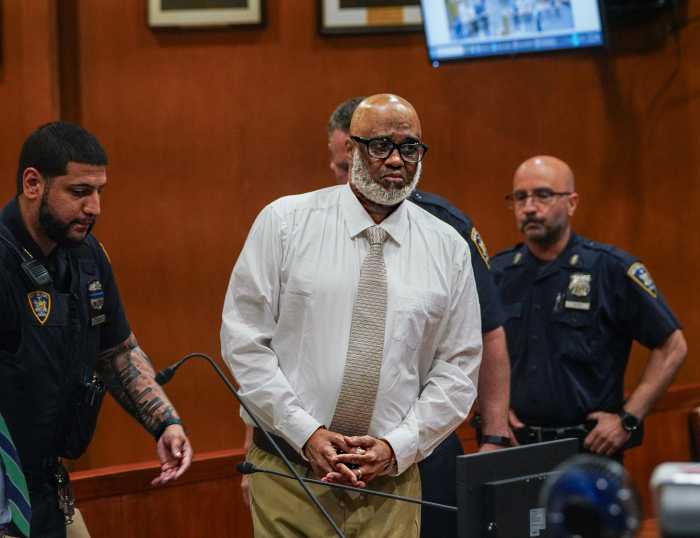Long Island teacher Matthew Silva turned his lifelong obsession with the New York State Pavilion into his first full-length documentary.
“Modern Ruin: A World’s Fair Pavilion” highlights the structure’s early beginnings from an ash dump run by the Brooklyn Ash Removal Company to the site of the 1964-65 World’s Fair. On March 19, the film will be screened at the Queens World Film Festival at P.S. 69 in Jackson Heights.
Silva, a video production teacher in Long Island, lived in Queens until he was 3 years old. His family moved to Long Island but would frequently come back to the “World’s Borough” to visit family in Whitestone and Middle Village.
During these trips, Silva would see the towering structure at Flushing Meadows-Corona Park and ask his parents about its purpose. He vividly remembers watching a scene in “Men in Black” with his father where the observation decks turned into spaceships. Silva, 30, could not use Google to do research since the search engine was not introduced until the late 90s.
He did not receive answers to his questions until after college, when he stumbled upon a book on architect Philip Johnson, who designed the pavilion.
“I saw a book in a bookstore and on the cover was the New York State Pavilion,” Silva said. “[I thought] that can’t be, that thing is just rotting away and it was designed by this really famous architect.”
After discovering the book, Silva spent “months and years” learning about the structure’s use as a roller skating rink and concert venue. He realized that the story of the pavilion was not well known and in February 2013 set out to make a documentary chronicling the pavilion’s history.
“What’s interesting about this project is whether you live here or not, there’s some sort of intrigue or mystery,” Silva said.
The film was completed in February 2015 and is Silva’s first attempt at filmmaking. The middle school teacher wrote, produced, shot and edited the entire project himself. He interviewed architects, historians, people who attended and worked at the World’s Fair and Christine Rafalke who, along with her husband Bob Jelen, operated the pavilion as a roller skating rink from 1972 to 1974.
Rafalke and her husband were the only people to successfully transform the space into something useful for the whole community, Silva said.
“When I first learned that it was a roller rink I thought it was a cheesy and bizarre thing to be, it’s so seemingly undignified for a pavilion from the World’s Fair. And I think that a lot of people had that perception.”
Silva said hearing Rafalke’s story changed his perception and that the roller rink is “a romantic and magical aspect of this whole thing.”
The pavilion was also the venue for several large performances including a 1969 concert series where the Grateful Dead, Led Zeppelin, Fleetwood Mac, Santana, Muddy Waters and more performed. The pavilion has been in a state of disrepair since the mid-70s but Silva, along with other conservation groups, is hoping to change that.
People for the Pavilion, a volunteer-run organization run by Silva and dedicated to the restoration of the structure, has organized several events to educate the public about its history and partners with city officials such as Queens Borough President Melinda Katz to brainstorm ideas about future uses.
In 2013, the Parks Department announced a $73 million restoration project that would include new landscaped paths and event spaces. In July 2014, $5.8 million from the city budget was allocated to the project. Last year, the steel framework of the Tent of Tomorrow was repainted.
“Through the film came the greater organizational effort, which has worked with community groups in Queens and the Queens borough president,” Silva said. “We’ve seen a lot of things change over the last few years [including] public perception for what the buildings means and its future.”
“Modern Ruin: A World’s Fair Pavilion” has also screened in Seoul, South Korea, Rotterdam, Netherlands, Munich, Germany and architecture schools across the state and country. Silva said he hopes the pavilion can be restored so the Queens community can enjoy it.
“I think a lot of us sort of hope that it becomes something useful, open to the public, multipurpose space that people can use rather than just look at from a distance,” Silva said.

